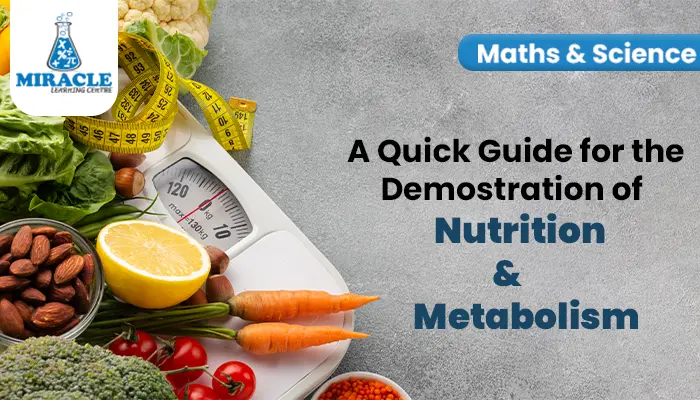The intricate balance of ecosystems is a result of the continuous flow of energy among various organisms. This energy flow is not only essential for the survival of individual species but also shapes the entire ecosystem's structure and dynamics. Energy transfer in food chains, food webs, and energy pyramids are powerful tools that help us understand and visualize how energy moves through an ecosystem, connecting species in a delicate web of interactions. This captivating phenomenon forms the cornerstone of ecological studies and finds its way into the curriculum of Science Tuition, where educators at centres like Miracle Learning Centre delve into the mysteries of the natural world.
Let’s start to brief about the ecosystem:
What is Food Chains?
A food chain is a linear representation of the flow of energy within an ecosystem. It consists of a series of organisms arranged in a hierarchical order based on who eats whom. The energy flow starts with primary producers, such as plants, algae, and certain bacteria. These organisms employ photosynthesis to convert sunlight into chemical energy, stored in the form of organic compounds like carbohydrates.
The next trophic level features herbivores or primary consumers that feed directly on the producers. These herbivores become a source of energy for the next trophic level, which includes carnivores or secondary consumers. Carnivores feed on herbivores, and in turn, may be preyed upon by higher-level carnivores known as tertiary consumers. This sequential transfer of energy forms a chain of relationships where energy moves from one organism to another.
Energy Transfer in Food Chains:
The transfer of energy along a food chain follows the laws of thermodynamics. As energy is transferred from one trophic level to another, a significant portion is lost as heat during metabolic processes such as respiration and digestion. This loss of energy limits the length of a food chain, as there is not enough energy to sustain a large number of trophic levels.
Due to this energy loss, a typical food chain usually consists of only a few trophic levels. For example, in a simple terrestrial ecosystem, a food chain might involve grass (producer) being consumed by a grasshopper (primary consumer), which is then consumed by a frog (secondary consumer), and ultimately, the frog is preyed upon by a snake (tertiary consumer). This simple food chain highlights the sequential energy transfer between different organisms.
Producer <- primary consumer <- secondary consumer <- tertiary consumer
Grass <- Grasshopper <- Frog <- snake
What is Food Webs?
While food chains provide a simplified view of energy flow, ecosystems are rarely so straightforward. Enter food webs – a more comprehensive and realistic representation of the complex interactions among multiple species in an ecosystem. Food webs take into account the interconnectedness of organisms and the reality that most species have multiple prey and predator interactions.
In a food web, species are organized into trophic levels similar to food chains. However, the beauty lies in the interlinking of these levels through intricate lines representing the transfer of energy. A single species can occupy multiple positions in the web, reflecting its varied dietary habits and interactions. This interconnectivity not only portrays a more accurate picture of an ecosystem's functioning but also highlights its resilience in the face of disturbances.
Keystone Species and Trophic Cascades: A Ripple Effect of Energy
Within food webs, certain species play a disproportionately influential role in maintaining ecosystem stability. These species, known as keystone species, have a significant impact on their environment despite their relatively low abundance. Keystone species can regulate the abundance of other species, preventing any one species from dominating and disrupting the balance.
Trophic cascades are fascinating phenomena that further emphasize the importance of energy flow in maintaining ecosystem health. A trophic cascade occurs when changes in the abundance of a top predator ripple through the food web, affecting every level below.
For instance, if a top predator's population declines due to factors like hunting or habitat loss, the prey species they feed on might proliferate. This surge in prey population could then lead to reduced numbers of primary producers, resulting in far-reaching consequences for the entire ecosystem's structure.
Difference between Food Chain and Food Web:
Understanding the distinction between food chains and food webs is pivotal to comprehending the intricate dynamics of energy flow in ecosystems.
Food Chain:
- A linear representation of energy transfer, illustrating a single pathway of consumption from producers to consumers.
- Offers a simplified view of predator-prey relationships within an ecosystem.
- Typically consists of a few trophic levels, limiting its depiction of real-world complexity.
- Useful for highlighting the direct flow of energy between organisms.
Food Web:
- A complex, interconnected network of multiple food chains within an ecosystem.
- Reflects the multitude of feeding relationships and interactions between various species.
- Provides a more realistic portrayal of energy flow and the interdependence of organisms.
- Enhances ecosystem stability by allowing for alternative prey and predators if one population is affected.
- Offers insights into the resilience and adaptability of ecosystems in response to changes.
Human Impact and the Delicate Equilibrium
Human activities have profound effects on the delicate equilibrium of energy transfer in food chains in ecosystems. Deforestation, pollution, overfishing, and climate change disrupt the natural balance, often leading to unintended consequences. For instance, overfishing can decimate top predator populations, triggering trophic cascades that alter the entire food web.
Furthermore, human-induced changes can cause the introduction of invasive species. These species, often without natural predators, can disrupt existing food chains and food webs. The classic example of the introduction of the cane toad in Australia highlights how a seemingly small change can have cascading effects through the ecosystem due to the toad's toxic skin, which is fatal to many of its would-be predators.
In Singapore, where education is highly valued, institutions like Miracle Learning Centre play a vital role in providing Secondary Science tuition to students. Understanding concepts like food chains and food webs is crucial for young learners to grasp the dynamics of the natural world and appreciate the delicate balance that sustains life on Earth.
Through engaging teaching methods, Secondary Science tuition in Singapore emphasizes not only the theoretical aspects of ecological concepts but also their real-world applications. Educators often draw parallels between these concepts and local ecosystems, helping students appreciate the relevance of ecological knowledge in their surroundings.
Conclusion:
Food chains and food webs are essential tools that enable us to visualize and comprehend the dynamic flow of energy within ecosystems. While food chains offer a simplified linear perspective, food webs present a more intricate and accurate representation of the complex interactions among species. In the educational context, institutions offering Secondary Science tuition in Singapore, such as Miracle Learning Centre, play a crucial role in fostering an understanding of these concepts among students. As we continue to explore and study the natural world, a deep comprehension of energy flow through food chains and food webs will undoubtedly enhance our ability to appreciate and safeguard the delicate balance of Earth's ecosystems.








